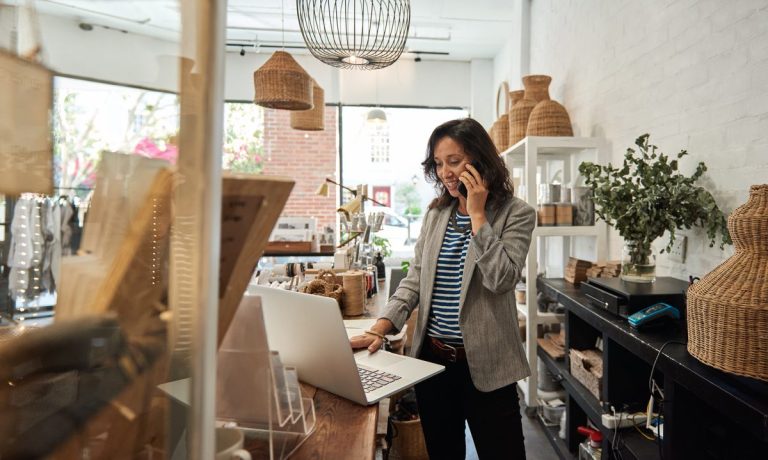
Although roughly half of Americans work for small and medium-sized businesses (SMBs) and these little companies — including retailers — collectively carry an outsized economic impact, their lack of resilience points to a need for greater investment in technology and automation.
In fact, PYMNTS research shows 48% of SMBs are just one missed payment away from closing their doors.
It is amid this backdrop that countless small merchants and eCommerce operators will be striving to differentiate themselves and grow their businesses in the new year, a trend that, more times than not, will see a primary strategy that involves increased digitization and virtualization of consumer touchpoints and delivery.
Transforming the SMB Shopping Experience for Consumers
The shift comes not only during an onslaught of pandemic-era transformations, but at a time when SMBs are also increasingly looking to make shopping a seamless virtual experience that can be conducted anywhere, including finding ways to change how the payments process is executed at the point of sale, and how it’s paid back afterward.
On that note, like their larger rivals, a growing number of SMBs are now finding success in offering consumers buy now, pay later (BNPL) options. Last holiday season, for instance, this option enabled consumers to buy more costly items, such as plane tickets, electronics, appliances and furniture, with minimal upfront, out-of-pocket costs.
An Eye on Embedded Finance
Additionally, to boost revenues, many small merchants — including those that already have functioning websites — are working to innovate further by adding enhancements such as embedded finance, too. Taira Hall, senior vice president of B2B and strategic innovation at FIS, said SMB solutions are at their best when they serve smaller enterprises via seamless protective coverage offers or financing options, such as pre-approved lines of credit, that make buying easier.
Tech-enabled embedded options like these are intriguing to traditional financial institutions, Hall added, as they look to expand their customer bases to include more small businesses.
On that note, virtual cards are also getting looks as a way to serve consumers who prefer paying that way. As it stands, the virtual-card payment experience is expected to hit $6.8 trillion by 2026, up from $1.9 trillion in 2021. Some much larger organizations, such as Nordstrom Rack, have implemented this already, allowing an in-store customer to send a text message to make a payment, thereby eliminating the need to carry any physical card at all.
Local Non-Shipping Options
Although holiday season inventory limitations were evident across most retail categories, early sales results data suggest that consumers were still able to find plenty of merchandise to buy, especially online, where eCommerce buying was up 11% year on year. While supply chain woes are not expected to end anytime soon, navigating this pinch point has proven to be perhaps the most cost-effective, low-tech solution that small retailers and merchants can deploy.
At the same time, with demand for delivery expected to grow alongside a shortage of final-mile staff and vehicles needed to complete transactions, local curbside or pickup in-store options are set to see further growth. As the trend of outsourcing delivery to consumers spreads and downsizes, it will continue to be a way for nimble SMB retailers to shine — especially as sub-60-minute urgent deliveries will increasingly require some level of customer involvement.
In short, although SMB merchants are at a disadvantage when it comes to their lack of selection, pricing power and IT assets, their ability to deliver — and proximity to customers — could prove to be a great leveler in their fight to survive.